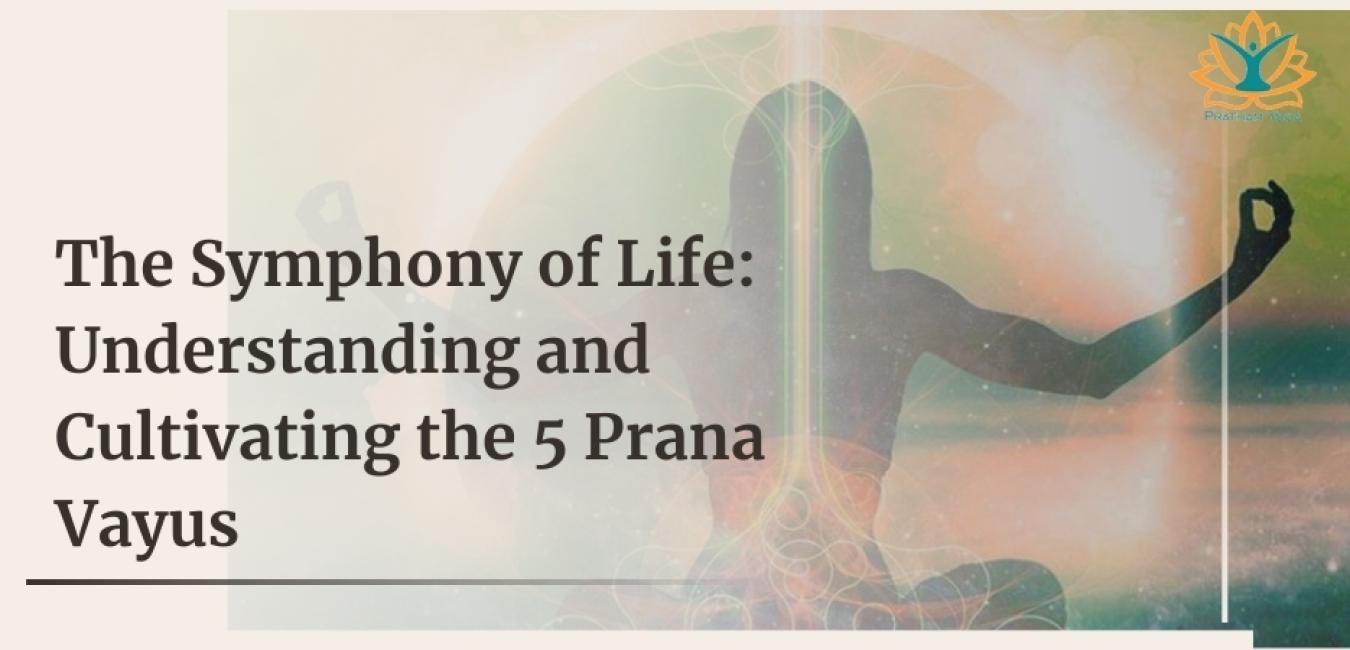Prana Vayu

Understanding the Subtle Energy of Prana Vayu in Yogic Philosophy
Prana Vayu is one of the five vital vayus or life forces described in ancient yogic and Ayurvedic texts. Derived from the Sanskrit root ‘pra’ (forth) and ‘an’ (to breathe), Prana Vayu refers to the upward and inward movement of energy that governs our respiration, heartbeat, and sensory perception. Positioned in the chest region, particularly around the lungs and heart, this vayu is considered the most crucial because it sustains life by facilitating the intake of oxygen and vital pranic energy. It acts as the gateway through which all other vayus operate, serving as the primary distributor of life force throughout the body.
The Role of Prana Vayu in Breath, Consciousness, and Vitality
In yogic science, Prana Vayu is intricately linked with both the physical and subtle bodies. It controls the breath — prana — and thus plays a key role in the nervous system, mental clarity, and emotional stability. Conscious breathing practices such as Pranayama directly influence the flow of Prana Vayu, enabling practitioners to harness and regulate their energy more effectively. When Prana Vayu is strong and balanced, one feels alert, vibrant, and mentally sharp. Conversely, when this vayu is disturbed, symptoms such as fatigue, anxiety, poor concentration, and shallow breathing may manifest. Yogis regard mastery over Prana Vayu as the first step toward expanding awareness and elevating consciousness.
Balancing Prana Vayu Through Yoga and Lifestyle Practices
Maintaining the balance of Prana Vayu is essential for overall well-being. Yoga asanas like Tadasana (Mountain Pose), Urdhva Hastasana (Upward Salute), and Bhujangasana (Cobra Pose) help open the chest and expand the lungs, creating space for Prana Vayu to flow freely. Likewise, pranayama techniques such as Anulom Vilom (alternate nostril breathing) and Ujjayi (victorious breath) are especially effective in stabilizing and nourishing this vital energy. From a lifestyle perspective, a sattvic diet rich in prana-filled foods — fresh fruits, vegetables, and whole grains — can support the health of Prana Vayu. Spending time in nature and consciously reducing stress are also helpful in regulating this vital force.
The Connection Between Prana Vayu and the Heart Chakra (Anahata)
Prana Vayu resides in the chest, making it intimately connected with the Anahata Chakra, or the heart center. This chakra is the bridge between the physical and spiritual realms and governs love, compassion, and emotional well-being. When Prana Vayu is balanced, it fosters openness in the heart chakra, allowing one to give and receive love effortlessly. On the other hand, disruptions in Prana Vayu can manifest as emotional blockages, grief, or inability to connect with others. Meditation practices that involve visualizing green light in the heart center, or silently chanting the mantra “Yam,” can harmonize both Anahata Chakra and the Prana Vayu, restoring emotional and energetic equilibrium.
How Prana Vayu Influences Other Vital Energies (Pancha Vayus)
While Prana Vayu is a standalone energy, it also works synergistically with the other four vayus — Apana, Samana, Udana, and Vyana. Think of Prana Vayu as the leader of this energetic orchestra. It initiates the intake of energy, which is then processed by Samana Vayu in the digestive region, eliminated by Apana Vayu in the lower abdomen, uplifted by Udana Vayu in the throat, and circulated by Vyana Vayu throughout the body. If Prana Vayu is weak or obstructed, the entire system suffers, leading to imbalances in metabolism, elimination, speech, and circulation. Therefore, restoring Prana Vayu can be the first and most powerful step toward holistic energy balance in the body.
Signs of Imbalanced Prana Vayu and How to Restore It
When Prana Vayu is not flowing smoothly, it can manifest in both subtle and physical symptoms. You may experience shallow or irregular breathing, chest tightness, palpitations, chronic fatigue, or even frequent sighing. On the emotional level, it may result in mental restlessness, panic attacks, or an inability to focus. To restore Prana Vayu, daily conscious breathing exercises and gentle yoga should be prioritized. Avoiding excessive screen time, incorporating herbal teas such as tulsi or brahmi, and practicing mindfulness can also create a supportive environment for the Prana Vayu to thrive. Journaling and heart-centered meditations are equally effective in calming the inner winds and restoring vitality.
- Vibnix Blog
- Politics
- News
- Liberia News
- Entertainment
- Technology
- EĞİTİM BİLGİLERİ
- Art
- Causes
- Crafts
- Dance
- Drinks
- Film
- Fitness
- Food
- Oyunlar
- Gardening
- Health
- Home
- Literature
- Music
- Networking
- Other
- Party
- Religion
- Shopping
- Sports
- Theater
- Wellness



